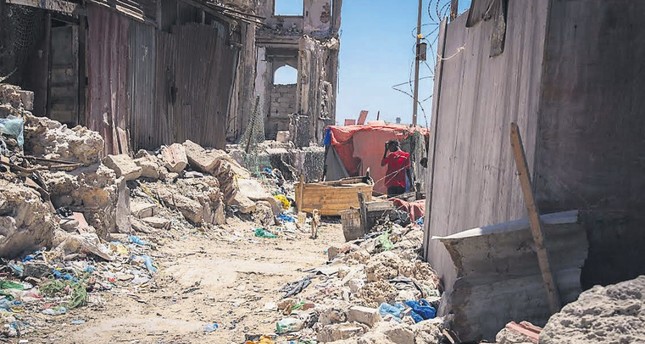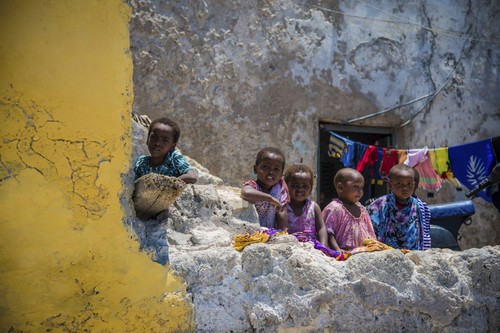Scars of civil war, terrorism still visible in Somalia

Photos by Yunus Paksoy
In the wake of a years-long civil war, a U.S.-led United Nations military operation in the 1990s and terrorism from the early 2000s to today, the trail of bloody wars and disheartening remnants of attacks still haunt the Somali capital Mogadishu. Having barely overcome the 2011 famine, Somalia currently faces yet another famine threat, displacing millions and putting at least 70,000 children at risk of death.
The people of Somalia have long suffered from malnutrition, droughts and natural disasters. On top of that, they also have a history of war and terrorism.
Somalia has not had a proper government nor nationwide peace for more than 20 years. Mohamed Siad Barre, who took rule over Somalia in 1969, was overthrown in 1991, which marked the beginning of a long-lasting period of civil war.
The overthrow of Barre was followed by U.N. intervention, after two Somali clans fought to the death over a dispute about who would rule the country. The United States-led Operation Restore Hope was intended to end the feud. However, things got out of control, resulting in a quick withdrawal of forces in slightly over a year.

In the 1970s, Mogadishu gave one the impression of a modern European capital. It is now enveloped by the curse of unrest and famine. Scenes in the Shangani district of Mogadishu resemble today’s Syria: Destroyed houses, bombed roads and the silence of a lost generation.
Yasin, a 29-year-old Somali who preferred to withhold his surname, sighs while scrolling through photos of “the old Somalia” on the internet. Barely holding back tears, Yasin murmured a couple of words about today’s humanitarian tragedies in Somalia. “It’s a pity. It’s a pity for these people,” he said, asking, “Is this even called living?”
The instability of the 1990s at the time of the U.N. operations and the civil war has not changed in the 2000s. Al-Shabab, a militant group terrorizing the country, has dealt a heavy blow to Somalia’s already weak condition. Shortly before my trip to Mogadishu, al-Shabab detonated a bomb-laden car in front of the city’s theater building, killing at least six people.
“Al-Shabab has touched my life,” said 28-year-old Nasir, who also sought anonymity. His car was heavily damaged in an attack carried out by the militant group almost 10 months ago. Brushing off the grief, the young Somali hopes for a terror-free country for the sake of his children’s future.
Yasin is not that optimistic. “After a period of certain time, you do not even think about what will happen in the future or whether Somalia will be OK once again.”
While buildings and houses with bullet marks from more than two decades ago barely remain standing in central Mogadishu, hundreds of thousands of Somalis walk for days to find food and water. In the early 1990s, the U.N. announced that around 4 million people were on the brink of dying from starvation. In 2017, nothing seems to have changed. According to the Turkish Red Crescent, 3 million people are currently at risk.
The country has been living with the trials of civil war and terrorist attacks, but it seems it will take much more than failed military operations for world powers to bring this land of 15 million people back to life.
Source:Daily Sabah